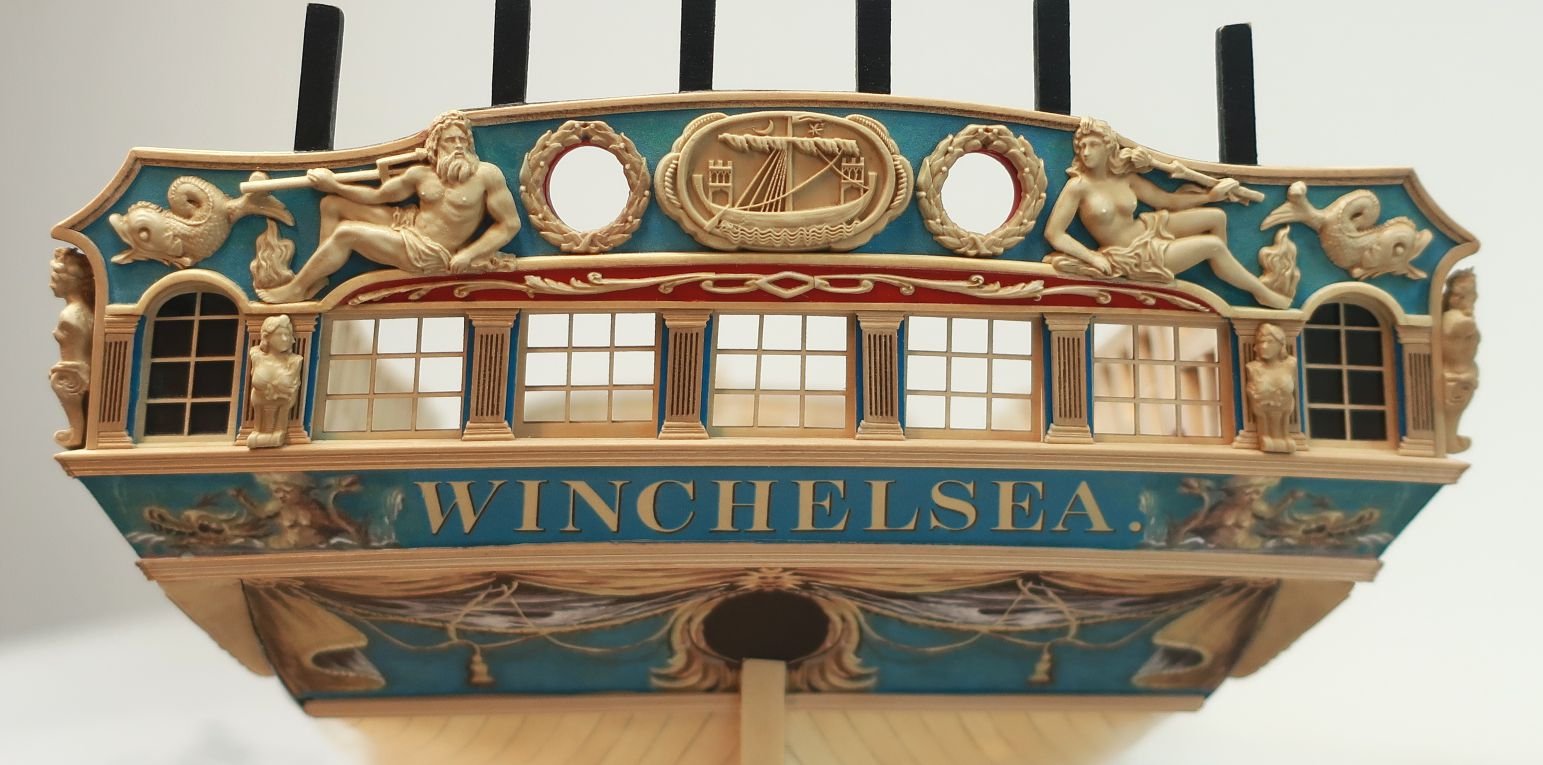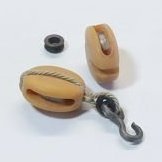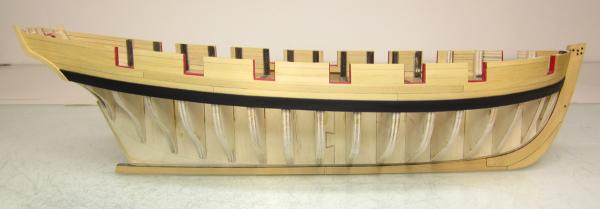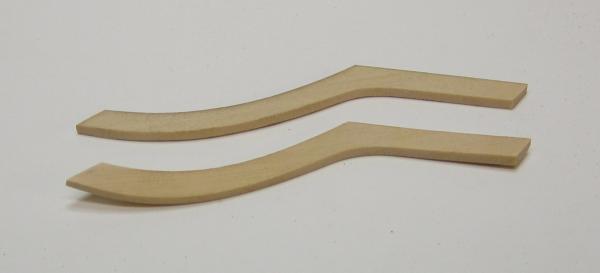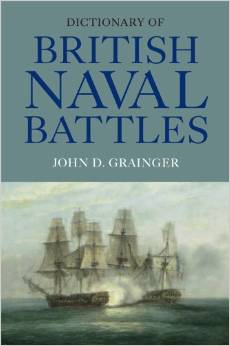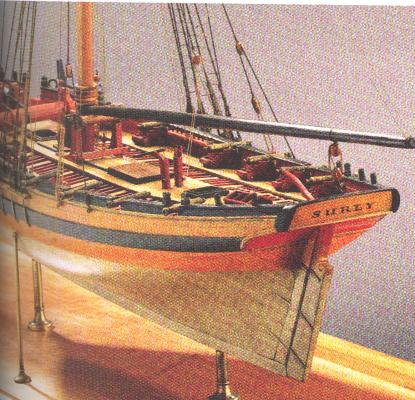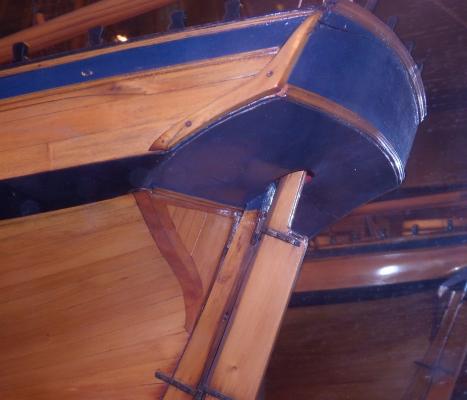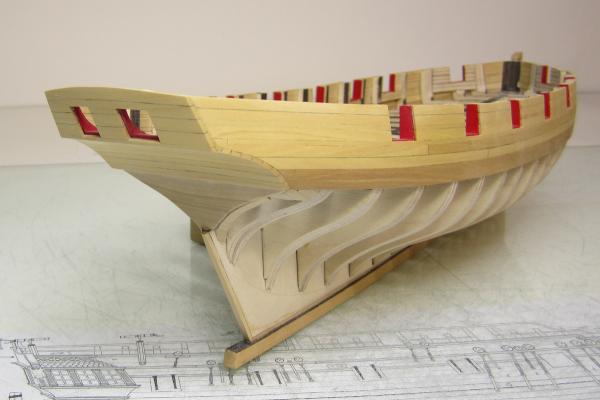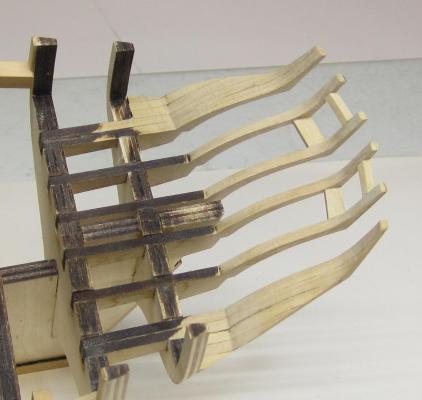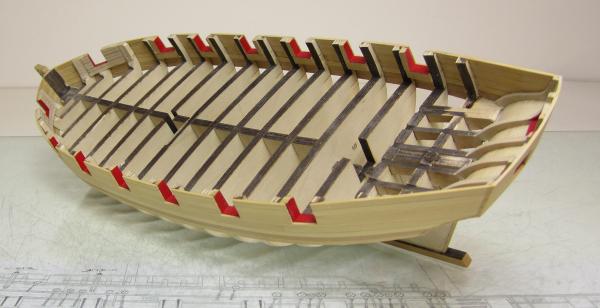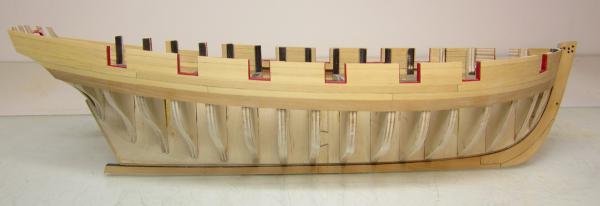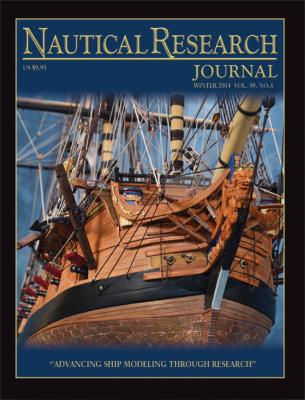-
Posts
9,506 -
Joined
-
Last visited
Content Type
Profiles
Forums
Gallery
Events
Everything posted by Chuck
-
Thanks..... That is still the plan. As soon as I complete the exterior planking with the square tuck and write the first few chapters of the monograph (which will be posted on my site as a free download) the plans will be released.
- 1,051 replies
-
- cheerful
- Syren Ship Model Company
-
(and 1 more)
Tagged with:
-
Well that is very interesting. Thank you Sjors. I have printed it and will stick the printout in the model so when I am ready to restore her I at least have a starting point. Here is the model in question by the way. I havent had time to give it a thorough researching yet. That is a big help. The name on the back is "Margareta" or "St. Margarethen" Chuck
- 1,051 replies
-
- cheerful
- Syren Ship Model Company
-
(and 1 more)
Tagged with:
-
Thats exactly how its working...I have my club meeting tonight so no work getting done at all. Plus I have to get some stuff ready for Thanksgiving at my place this year. Yikes.
- 1,051 replies
-
- cheerful
- Syren Ship Model Company
-
(and 1 more)
Tagged with:
-
Its been so long I am not entirely sure. Tough to remember every last detail. Best to be safe and move it down by at least 1/32" do give you a bit of wiggle room. Chuck
- 659 replies
-
- syren
- model shipways
-
(and 1 more)
Tagged with:
-
Fine run to that plank...dont forget to measure up from the top of that plank at the bow to make sure that you have enough room for all of the strakes along the stem. I see many builds that curve the initial plank to high up on the stem and it causes issues later.
- 659 replies
-
- syren
- model shipways
-
(and 1 more)
Tagged with:
-
Thanks George....No kit but definitely some other parts....see this post in the build log. But I havent ruled it out entirely. I Never say never. http://modelshipworld.com/index.php/topic/8131-hm-cutter-cheerful-1806-148-scale-by-chuck/?p=244654
- 1,051 replies
-
- cheerful
- Syren Ship Model Company
-
(and 1 more)
Tagged with:
-
I was able to shape the fashion pieces today. They are will be in one piece with the boom crutch added separately later. The boom crutches wont be added until the cap rail is added way down the road. For now I just left them extra long so I can file them back to where I want them. You can see in the photo how the bottom fashion piece was bent using heat.....no water or soaking. The top one is the flat 1/16" thick piece which has not been bent yet. Once these were glued on the model, the second layer of the wales (two strakes) were added and painted. I still have to paint them on the other side. After thats done I will treenail above the wales. That will be easier to do before I add the fancy molding along the sides of the hull per the plan. Notice how the fashion piece covers the end grain of the planks on the stern transom. When the stern is all done there shouldnt be any end-grain exposed for any of the planking. The fashion piece and square tuck protect them from the elements.
- 1,051 replies
-
- cheerful
- Syren Ship Model Company
-
(and 1 more)
Tagged with:
-
Thats not entirely true....if everyone thought I was nuts or off-base I wouldnt have. Based on the even mix of opinions though, I feel comfortable that folks wont say "what was he thinking". So black and red it is.....the comments are a huge help actually. I am hopefully going to get the fashion pieces made and installed today and then the final layer of wales. Chuck
- 1,051 replies
-
- cheerful
- Syren Ship Model Company
-
(and 1 more)
Tagged with:
-
Dictionary of British Naval Battles By John D. Grainger Woodbridge, Suffolk: The Boydell Press, 2012 6-1/2” x 9-1/2”, hardcover, xiv + 588 pages Maps, glossary, bibliography, index. $90.00 ISBN: 9781843837046 John D. Grainger has presented readers with a thorough and accessible reference source on British naval encounters in his book, Dictionary of British Naval Battles. Focusing on British naval encounters from the Middle Ages through modern day, Grainger offers a new resource for naval historians and those with a casual interest in naval warfare alike. Addressing not only on the major battles of British naval history but on small naval encounters as well, Grainger offers an interpretation of Britain’s naval prowess rarely covered in other accounts. In doing so, Grainger presents the development of a diverse and influential naval force that became the dominant power on the sea throughout much of history. Grainger’s central objective is to demonstrate the breadth and multiplicity of British naval power throughout British history. Highlighting the widespread influence of Britain across the globe and its use of naval power to obtain this supremacy, Grainger aptly portrays the British navy as an active and disseminated entity almost continuously utilized. Using largely secondary sources, Grainger discusses each naval encounter in a clear and concise manor, detailing the vessels involved and their outfits, in addition to discussing the details of each event. Grainger organizes his work by naval vessel and individual battle, allowing him to discuss even small naval encounters largely overlooked in many British naval histories. Grainger begins his work discussing the meaning of the expressions “British”, “naval” and “dictionary”, effectively describing his definitions for the words as they pertain to the topics included in his work. Maintaining that “British” must include any navy under British rule, in one volume, Grainger effectively is able to discuss naval encounters ranging from the northern Irish attack on the Hebrides in 580 AD to Britain’s naval endeavors in the Persian Gulf. Focusing on each naval battle in turn, Grainger maintains a level of detail in each entry that surpasses many other works of the same nature. Grainger has produced detailed and well-crafted entries on a wide range of British naval topics, spanning from the medieval period to modern day. While his research is comprehensive, his scope remains very large, which at times can seem overwhelming. Though his general outline takes a logical and systematic approach, the wide range of topics covered has the potential to lose a reader. At times, the chronology of events is lost due to the alphabetical organization of the work, taking away from a more liminal understanding of Britain’s naval history. Despite this, Grainger clearly addresses his organizational technique in his introduction, and provides readers with additional references at the end of each entry for those interested in learning more about specific topics. Overall, Grainger has produced a well-researched and skillfully written addition to the canon of British naval history. Grainger has developed a valuable source of knowledge on British naval events, effectively producing an important reference source on British vessels, battles, and naval warfare. Caitlin Zant East Carolina University
-
Natural is the safe way to go. I think I am a bit more adventurous than that. So I will go with the Surly color scheme. It will be interesting to see a few more with different paint schemes should any of you decide to build her as well. Thats the fun part of this hobby. But who knows, I could change my mind tomorrow.
- 1,051 replies
-
- cheerful
- Syren Ship Model Company
-
(and 1 more)
Tagged with:
-
That looks very good Rusty. As fine as any planking job that I have seen. I applaud your willingness to try the proper planking techniques of spiling and such. Its different than just force bending and may take more time but once you start, its something you will just continue to do. Well done!!! Chuck
-
I am actually leaning towards the Surly paint scheme. Black caprail and black sheer strip, with red bulwarks and red counter. But that can change, This is always a struggle for me to decide. Chuck
- 1,051 replies
-
- cheerful
- Syren Ship Model Company
-
(and 1 more)
Tagged with:
-
Almost forgot.....looking for some second opinions. I am thinking about painting the lower counter and leaving the transom natural. Like the Surly contemporary model. What do you think? Maybe blue....but not this bright. Is it too much? Maybe leave it all natural back there? You will also note how the Surly had the bulwarks cut down which is why the transom is a funky shape. This was done during a refit long after the Cheerful was already gone. Cheerful didnt last too long. Maybe I will switch and call her the Surly....I am not feeling too cheerful today.. Chuck
- 1,051 replies
-
- cheerful
- Syren Ship Model Company
-
(and 1 more)
Tagged with:
-
Got the counter and the transom planked. You may notice that I thinned down the outside stern frames considerably before planking the stern. The first photo shows how thick they were before it was planked. After the sides of the hull were planked the outside stern frames were strong enough to handle the thinning down. It makes the model more historically correct. The inboard side of the stern and counter will not be planked so I wanted to make sure it looked as authentic as possible. That of course means that I must really clean up the inboard side between the stern frames carefully to prepare it for painting. I will fill any cracks and sand it smooth and do lots of surface prep. Now I can have some fun. Its time to put the fashion pieces on and the wales and fancy trim. This is the step that will make it really come together. Chuck
- 1,051 replies
-
- cheerful
- Syren Ship Model Company
-
(and 1 more)
Tagged with:
-
It would be tough to get pieces large enough if you are building in a larger scale. But I have used hard maple from Home Depot or lowes that was 1/4" thick. It worked fantastic. The stuff is rock hard though so be prepared to sand and sand....its tough to cut as well as the blades will get dull quickly. Chuck
-
Funny....Yes, I introduced my son to binge watching the X Files from start to finish on Netflix. He bought me that poster as a thank you. It was a blast watching it with him. Big Sci-fi buff. Chuck
- 1,051 replies
-
- cheerful
- Syren Ship Model Company
-
(and 1 more)
Tagged with:
-
Thats the laser char....I didnt bother sanding it....it will all be removed when I take down the bulwarks later. The ply burns a bit and teh char is more evident. Chuck
- 1,051 replies
-
- cheerful
- Syren Ship Model Company
-
(and 1 more)
Tagged with:
-
The planking above the wales is basically completed. Just a few more planks to add on the port side as you can see. I didnt bother simulating the caulking between the seams where it wont show. So it looks a bit weird now. But once the molding and second layer of the wales is added it will look fine. You can only see a few places with a crisp line for the seams. This was done by running a number two pencil down one plank edge. If I did this on both plank edges it would have been too pronounced for my tastes. I will plank the transom and counter next at the stern. Its an interesting detail that in case of a cutter like this you dont plank the stern counter first. The transom and counter are planked after the sides of the hull. The exposed end-grain of the counter planking and transom planking will be protected from the elements and rot by the fashion pieces. You can see them in the profile drawing. So you will not see any of the end grain from the planking. The frame for the square tuck also does this for the end grain of the planks. Its an interesting feature and I almost forgot NOT to plank the counter first. It is something I am so accustomed to doing. Before I plank the stern transom and counter I have some shaping of the outer stern frames to do. I will post pictures of this as well because its an important feature to keeping the finished model looking accurate. So far its coming together quite well without any real issues. Its a fun build so far. You can start to see the final shape of the cutter come to life as the planking progresses. I know the bulwarks look thick at this point but they will actually be thinned down quite a bit soon. The outboard and inboard planking at the sheer was actually just 1 1/2" thick....once its planked inboard and out the final width will be just 1/8 - 5/32" thick at the most. Closer to 1/8" thick I hope.
- 1,051 replies
-
- cheerful
- Syren Ship Model Company
-
(and 1 more)
Tagged with:
-
Nautical Research Guild Winter Issue is in the mail. Become a member and get it delivered to your front door every 3 months. Here are some highlights including the table of contents. EDITORIAL . . . . . . . . . . . . . . . . . . . . . . . . . . . . . . . . . . . . . . . . . . . 242 The Weedon Island Dugout: A 1,100 year-old Saltwater Canoe by Irwin Schuster . . . . . . . . . . . . . . . . . . . . . . . . . . . . . . . . . . . . . . .243 The Blockade Runner Condor by Jeneva Wright . . . . . . . . . . . . . . . . . . . . . . . . . . . . . . . . . . . . . . . .251 Scratch Building a United States Navy Anchor Hoy of circa 1819 by Don Meadows . . . . . . . . . . . . . . . . . . . . . . . . . . . . . . . . . . . . . . .271 Trash to Treasure—A Restoration Project by Bill Mitchell . . . . . . . . . . . . . . . . . . . . . . . . . . . . . . . . . . . . . . . . . 281 HMS Ardent: A King’s Ship, But Which King? by Ron Neilson . . . . . . . . . . . . . . . . . . . . . . . . . . . . . . . . . . . . . . . . .289 A Traditional 10-foot Wooden Dinghy Model by Byron Rosenbaum . . . . . . . . . . . . . . . . . . . . . . . . . . . . . . . . . . . .305 SHOP NOTES Simulated Deadeyes for Mini-Models by Irwin Schuster . . . . . . . . . . . . . . . . . . . . . . . . . . . . . . . . . . . . . . . . 311 A Bonding Jig for Acrylic by Irwin Schuster . . . . . . . . . . . . . . . . . . . . . . . . . . . . . . . . . . . . . . . . 311 MODELERS’ REVIEWS Orange Hobby HMS Victorious (1966) Kit by Mark Myers . . . . . . . . . . . . . . . . . . . . . . . . . . . . . . . . . . . . . . . . . . 313 Letters to the Editor. . . . . . . . . . . . . . . . . . . . . . . . . . . . . . . . . . . . . . . . . .315 BOOK REVIEWS . . . . . . . . . . . . . . . . . . . . . . . . . . . . . . . . . . . . . . . . . . ..315 ADVERTISER INDEX . . . . . . . . . . . . . . . . . . . . . . . . . . . . . . . . . . . . . . . . 316 Click here to read one of the articles.... Read this months Editorial by Paul Fontenoy For more info on the Journal and the NRG please visit the website.
-
Thanks...Yes indeed I do But it all gets done eventually. I really like coffee. Chuck
- 1,051 replies
-
- cheerful
- Syren Ship Model Company
-
(and 1 more)
Tagged with:
About us
Modelshipworld - Advancing Ship Modeling through Research
SSL Secured
Your security is important for us so this Website is SSL-Secured
NRG Mailing Address
Nautical Research Guild
237 South Lincoln Street
Westmont IL, 60559-1917
Model Ship World ® and the MSW logo are Registered Trademarks, and belong to the Nautical Research Guild (United States Patent and Trademark Office: No. 6,929,264 & No. 6,929,274, registered Dec. 20, 2022)
Helpful Links
About the NRG
If you enjoy building ship models that are historically accurate as well as beautiful, then The Nautical Research Guild (NRG) is just right for you.
The Guild is a non-profit educational organization whose mission is to “Advance Ship Modeling Through Research”. We provide support to our members in their efforts to raise the quality of their model ships.
The Nautical Research Guild has published our world-renowned quarterly magazine, The Nautical Research Journal, since 1955. The pages of the Journal are full of articles by accomplished ship modelers who show you how they create those exquisite details on their models, and by maritime historians who show you the correct details to build. The Journal is available in both print and digital editions. Go to the NRG web site (www.thenrg.org) to download a complimentary digital copy of the Journal. The NRG also publishes plan sets, books and compilations of back issues of the Journal and the former Ships in Scale and Model Ship Builder magazines.

